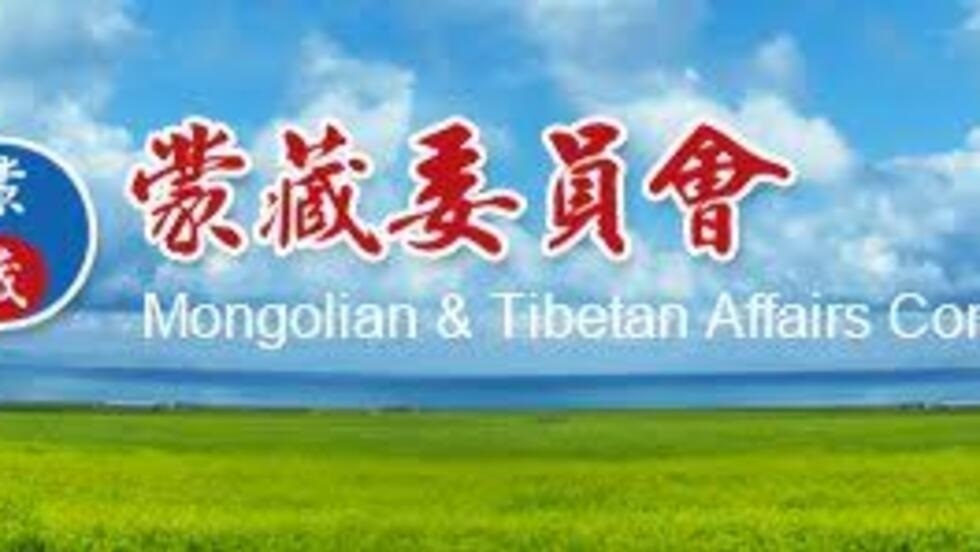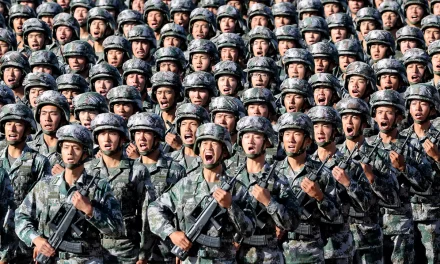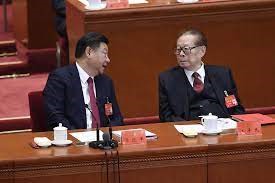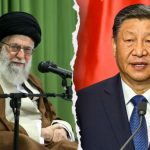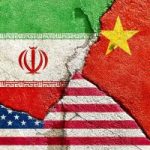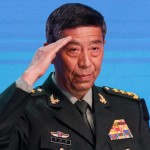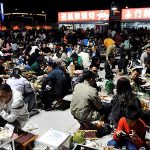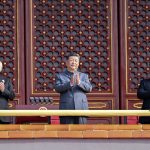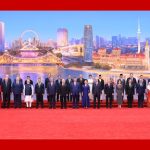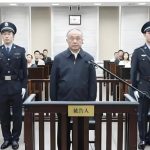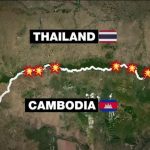By Huang Manting and Zeng Jianyuan
(Editor’s note: The authors present their argument about the history of relations between the Republic of China, Tibet and Greater Mongolia. When they here use the term translated directly as “Southern Mongolia,” the reference is to roughly the area coinciding with today’s Chinese province of Inner Mongolia. Any reference of Outer Mongolia roughly corresponds to today’s independent country of Mongolia. The historical views expressed here are the authors’ own.)
I. Introduction
A. The Republic of China and Southern Mongolia and Tibet: Background and Overview
The background of the relationship between the Republic of China and southern Mongolia and Tibet is deep and complex, involving issues of China’s domestic politics, national self-determination, international law and many other issues. The following provides an overview of the situation in Southern Mongolia and Tibet respectively.
Southern Mongolia:
The Republic of China replaced the Qing Dynasty as the new Chinese government after the 1911 Xinhai Revolution. During the Qing Dynasty, China’s “Mongolia” included Inner Mongolia and Outer Mongolia. After the revolution, Outer Mongolia took the opportunity to declare independence. Although Outer Mongolia gained de facto independence in 1921, the Republic of China did not officially recognize it until after 1945.
At the beginning of the 20th century, Southern Mongolia (i.e. Inner Mongolia) was hesitant to join the Mongolian state. Most regions still retained a relatively independent status from the central government. After the founding of the Republic of China, China tried to further integrate these areas. In 1929, it established various provinces and counties in Southern Mongolia, and later recognized the autonomy of alliances and banners [military divisions that had been organized by the Manchus before and during their rule over China as the Qing Dynasty], and implemented the administrative separation of Mongolia and the Han. Although the Republic of China advocated equal treatment of all ethnic groups in terms of policy and tried to protect the rights and interests of the Mongolian people through self-government policies, with respect to the actual governance process, due to various reasons, especially after the outbreak of the Anti-Japanese War, it effectively lost its control over southern Mongolia. And so the effort was not fully realized.
Tibet
The situation in Tibet during the Republic of China period was more complicated. The Republic considered itself the successor to the Qing Dynasty, and claimed Tibet as part of its territory. However, from the formal founding of the Republic in 1912, Tibet’s declaration of independence in February 1913, and then until Tibet was occupied by the People’s Republic of China in 1951, Tibet in essence enjoyed a high degree of autonomy, and was sometimes regarded as de facto independent. The Republic of China claimed sovereignty over it, but did not effectively exercise that power in practice. In 1949, the Communist Party of China established the People’s Republic of China, replacing the Republic of China as the ruling government in mainland China. The People’s Republic launched a military operation known as “peaceful liberation” in 1950 and occupied Tibet in 1951. When the 14th Dalai Lama Tenzin Gyatso went into exile in India in 1959, the People’s Republic of China was able to further strengthen its control over Tibet.
These historical events had a profound impact on the relationship between the government of the Republic of China and southern Mongolia and Tibet. However, these relationships are not absolutely clear-cut and involve many contentious issues, such as national sovereignty, self-determination, and the interpretation and application of international law. Each point of view has its theoretical and historical basis, and can be influenced by different political, cultural and geographical backgrounds.
B. The Treaty of Friendship and Alliance Between the Governments of Mongolia and Tibet: An Overview, and its Importance in Mongolian-Tibetan Relations
The Treaty of Friendship and Alliance Between the Governments of Mongolia and Tibet was an important treaty signed by representatives of the two jurisdictions in 1913. This treaty in particular has important historical significance. It expressed the will of the two to break away from China and become independent countries, and each recognized the other’s sovereignty. This marked the process of the two Tibetan Buddhist countries, Mongolia and Tibet, striving for independence from Chinese rule. The two promised mutual support, including the expression of their need to continue to give each other moral support.
The treaty’s existence and validity was controversial because Tibet’s representative, Agvan Lobsan Dorzhiev, was also an ethnic Mongolian and a Russian subject from Buryatia, Russia. Russia believed that he had no right to represent Tibet, so it questioned the validity of the treaty. The 13th Dalai Lama Thubten Gyatso did not recognize the treaty afterwards, perhaps to appease Britain’s concerns about Russia’s interference in Tibet.
Although this treaty did not play a role In Mongolia-Tibetan relations in international law, it expressed the will of Mongolia and Tibet to be independent, as well as the diplomatic behavior carried out as countries in the international political environment at that time. In terms of content, it also reflected the brotherhood of the two ethnic groups/countries of Mongolia and Tibet. In general, the Mongolia-Tibetan Friendship Alliance Treaty attempted to achieve the following goals in Mongolia-Tibetan relations:
1. Mutual political recognition: the two countries had separated from China, recognized each other’s independent status and sovereignty, and formed a political partnership.
2. Religious cooperation: The two countries pledged to work together for the well-being of the Buddhist faith, which deepened the cultural ties between the two countries and to some extent shaped their social and cultural identities.
3. Economic Exchanges: The terms of the treaty on bilateral commercial relations provided a framework for economic development and cooperation between the two countries.
4. Security Guarantees: The treaty stipulated that the two countries would assist each other in the face of external and internal dangers, which provided security for both and further strengthened their alliance.
Therefore, from this perspective, the Mongolia-Tibetan Friendship and Alliance Treaty not only attempted to establish the independent status of Mongolia and Tibet, but also considered cooperation between the two countries on multiple levels, such as politics, economics, religion and security. The development and interaction of the two ethnic groups would exert influence that would last and be adhered going forward.
II. Evolution in the Relations Among Mongolia, Southern Mongolia, Tibet and the ROC
A. The Relation Between the ROC and Mongolia
Immediately after Mongolia’s independence, the Republic of China did not recognize it. Yuan Shikai’s government took advantage of the tensions between broader Mongolia’s traditional heartland. southern Mongolia, and eastern Mongolia, as well as Russia’s fear of the spread of the Mongolian unification movement to its own Buryatia Mongolia. Russian, Chinese and Mongolian actors through the “Sino-Russian Monchakhtu Agreement” prevented Mongolia from realizing its desire for unification. At the same time, the integration into China of southern Mongolia was accelerated.
After Russia’s 1917 October Revolution, Russian Buryat Mongolia set off a pan-Mongolian unification movement, invaded Outer Mongolia and established the Great Mongolian State. Outer Mongolia used China to drive out Buryat Mongolia, and then used Soviet and White Russian forces to drive out the Chinese garrison and restore the country. While using the power of Soviet Russia to drive away the Buryat forces and restore independence, China and the Soviet Union both required Mongolia to abide by the “Sino-Russian Monchakhtu Agreement” and accept China’s formal suzerainty. But in fact, Mongolia became a protectorate of the Soviet Union. And in Japan, it was agreed to form a buffer zone between the Soviet Union and China.
After the Second World War, the Mongolian People’s Republic held a referendum in accordance with the “Sino-Soviet Treaty of Friendship and Alliance,” and its sovereign independence was finally recognized by the Republic of China. Later, when the ROC made a new constitution, Outer Mongolia did not send representatives to the National Assembly to participate. The inherent territory in the “Constitution of the Republic of China,” understood from the perspective of social-contract theory, did not include Outer Mongolia, which did not participate in the peaceful establishment of the Republic of China after the war.
After the Republic of China withdrew to Taiwan, the United Nations initiated a “Proposal on the Soviet Union’s Violation of the Sino-Soviet Treaty of Friendship and Alliance of August 14, 1945 and the United Nations Charter: Threats to China’s Political Independence and Territorial Integrity and the Peace in the Far East.” The United Nations General Assembly adopted it accordingly. In resolution No. 505 in 1953, the Republic of China (Taiwan) announced the abolition of the “Sino-Soviet Treaty of Friendship and Alliance” and the revocation of Mongolia’s independence. According to international law, the withdrawal of diplomatic recognition of one country by another does not affect the legal status of the first country. Although the ROC had resumed treating Outer Mongolia as a territory in its internal affairs, in fact it had not changed this status according to the procedures for amending the constitution, and simply brought Outer Mongolia on paper back into the territory of the ROC.
Outer Mongolia later successfully transformed into a democratic country in the third wave of democratization, and Taiwan and Mongolia started exchanges. After the Democratic Progressive Party came to power in 2000, Article 3 of the “Regulations for the Implementation of the Regulations on Relations between the People of the Taiwan Area and the Mainland Area” was revised in January 2002, moving the “Outer Mongolia region” out of the definition of the mainland area. The Republic of China thus reaffirmed its recognition of the independence of Mongolia, and clearly transferred Mongolian affairs from the Mongolian and Tibetan Affairs Committee to the Ministry of Foreign Affairs.
B. Relations Between Southern Mongolia and the ROC
After the founding of the Republic of China, its Li Fan Department was in charge of Mongolian affairs for a short time, but in the face of the independence of Mongolia and Tibet, Yuan Shikai’s Beiyang government decided to absorb southern Mongolia. The Ministry of Internal Affairs was in charge of this process, and moved people to the border, to enable divide- and-rule. In 1928, the Nationalist Government unified China, set up the Mongolia-Tibetan Committee to be in charge of Mongolia and Tibet affairs, and set up new provinces and counties in southern Mongolia, forming a Mongolian-Han division of authority via the Mongolian League banner.
In 1932, when Manchukuo was founded [by the invading Japanese], Eastern Mongolia became part of Manchukuo. In order to protect themselves, the Mongols in the remaining portion of southern Mongolia took advantage of the conflict between Japan and China to initiate the implementation of Inner Mongolia’s autonomy and plan for its independence. After the July 7th Incident, Japan only supported the autonomy of Inner Mongolia, and opposed the merger of the eastern provinces of Inner Mongolia into Manchukuo, and eventually established a Mongolian Autonomous State.
In February 1945, the United Kingdom, the United States, and the Soviet Union in Yalta, Crimea in the USSR negotiated the latter’s participation in the war against Japan, and signed “The Yalta Far East Agreements.” The first article of the associated “Yalta Secret Treaty” stipulated that “the status quo in Mongolia will be maintained.” In order to implement the “Yalta Secret Treaty,” China and the Soviet Union signed the “Sino-Soviet Treaty of Friendship and Alliance,” agreeing to Mongolia’s self-determination and independence, while Inner Mongolia would remain part of China. After the Soviet Union entered the war, Manchukuo collapsed, Japan surrendered, and Inner Mongolia took the opportunity to become independent. With the support of the Chinese Communist Party, it announced the establishment of the People’s Republic of Inner Mongolia. Eastern Mongolia tried to promote the unification of Mongolia and this Mongolian People’s Republic, but the Mongolian People’s Republic clearly refused to accept Inner and Eastern Mongolia. The People’s Republic of Inner Mongolia then decided to abandon independence and declared Inner Mongolia autonomous. On the other hand, the Republic of China returned to Southern Mongolia, rebuilt the provinces, restored Mongolian-Han administrative separation, and held local elections for the Constitution-making National Assembly. Article 119 of the “Constitution of the Republic of China” stipulates: “The system of local autonomy for the Mongolian alliances and banners shall be established by law.” It did not follow the wishes of the people of Southern Mongolia, failing to regard Southern Mongolia as a whole as a political entity, or to guarantee its national autonomy.
After the civil war between the Kuomintang and the Communist Party broke out again, the provinces of Inner Mongolia fell one after another, and Western Mongolia initially sought autonomy, but it finally fell too. In October 1949, Premier Yan Xishan led the central government of the Republic of China into exile in Taiwan. In February 1950, the People’s Republic of China and the Soviet Union signed the “Sino-Soviet Treaty of Friendship, Alliance and Mutual Assistance,” which determined the division of Mongolia into north and south.
Taiwan’s affairs with Mongolia are now managed by the Mongolia-Tibetan Committee, which does not take national borders as determinative, but targets instead the Mongolian people. Therefore, regardless of Mongolia, Southern Mongolia, Xinjiang Junggar Mongolia, Russian Buryat Mongolia, or Kalmyk Mongolia, the affairs of Tuva and other Mongolian countries or regions belong to the Mongolian Affairs Office of the Mongolian and Tibetan Affairs Commission. Since the Mongolian-Tibetan Commission is a core member of the leading eight ministries and two committees of the Executive Yuan, and the Mongolian-Tibetan Committee has simple responsibilities in Taiwan, the chairman of the committee has been appointed by the Executive Yuan since Xu Zhixiong, a political committee member, was appointed during the Chen Shui-Bian administration. His job is mainly to handle the affairs of the executive committee assigned by the Executive Yuan, and he attends the meeting of the Executive Yuan as the chairman of the Mongolian and Tibetan Committee, so that the Mongolian and Tibetan affairs are discussed in a different way.
C. Relations Between Tibet and the ROC
Tibet signed the “Mongolia-Tibetan Friendship Treaty” with Mongolia in January 1913, and in February of that year issued what is often considered its Declaration of Independence, “Regulations on the Future Choice of All Tibetan Monks and Laypeople” (also known as Buddhist Edict for the Holy Land) [a document with proclamations on numerous civil and religious matters]. It at that time terminated the relationship with China that had existed since the early Qing Dynasty. On October 13, in Shimla, India, Britain was trying to mediate the dispute between China and Tibet. The ROC opposed Tibetan independence, and the negotiations broke down. Sino-Tibetan border disputes have continued to this day.
In 1929, the Republic of China government established its Mongolian and Tibetan Committee. In 1933, the 13th Dalai Lama passed away. In 1940, the enthronement ceremony of the 14th Dalai Lama was held in Tibet. Wu Zhongxin, chairman of the Mongolian and Tibetan Committee, represented the ROC in observing the ceremony. During the Sino-Japanese War, the ROC had no time to pay attention to Tibetan affairs, and Tibet maintained de facto independence. After the war, in order to strive for independence, Tibet sent a condolence delegation to the Allied countries, which visited Great Britain, the United States, and China. When the delegation of condolences to the Allied countries arrived in Nanjing, members were invited to attend the Constitution-making National Congress as representatives of a certified national group, which was equivalent to participating in the making of the constitution of the Republic of China. The Chairman of the Nationalist Government and President of the Chinese Kuomintang party, Chiang Kai-Shek, insisted on deleting the clauses of ethnic regional autonomy in the draft constitution. However, regarding Tibetan autonomy, Article 120 of the “Constitution of the Republic of China” in the end stipulated that “Tibetan autonomy should be guaranteed.” After the civil war between the Kuomintang and the Communist Party resumed, the Tibetan government requested the Mongolian and Tibetan Committee’s representative office in Tibet to withdraw in July 1949 on the grounds that it did not want to intervene in the Chinese civil war. Tibetan lamas, government officials and representatives of public opinion, led by the Seventh Changkya Khutukhtu [a lama authorized under the Qing], also known as Zhangjia Hutuktuluo Senbandian Tenbi Rongmei, and chairman of the Buddhist Association of China, retreated to Taiwan along with Executive Premier Yan Xishan.
In 1951, the People’s Liberation Army of the People’s Republic of China entered Tibet, and the Tibetan people resisted “democratic” reforms promoted by the PRC. In 1959, the Kashag government, led by the 14th Dalai Lama, went into exile in India. In his Letter to Compatriots in Tibet, Chiang Kai-Shek declared that Tibet’s future political system and political status could be achieved by vis principle of self-determination by the Tibetan people. Taiwan was eager to use the Tibetan uprising to increase its political appeal in mainland China, so it sent personnel to India to seek cooperation partners with the Tibetan government-in-exile. Wangcheng Georg Surkah and Yuthok Tashi Dhondup defected to Taipei to set up the Tibet Kalōn Office, but the establishment of the Taipei Tibet Kalōn Office was deemed a rebellion by the Tibetan government-in-exile, which led to overall deterioration in ROC-Tibet relations.
In January 1982, Kalu Rinpoche, sent by the Shangpa Kagyu, came to Taiwan to preach the Dharma, which sparked an upsurge of teaching of Tibetan Buddhism in Taiwan in the 1980s. In 1989, the Dalai Lama was awarded the Nobel Peace Prize, which shocked Taiwan, which had already been shocked by the events of June 4th. Taiwanese society was full of sympathy for Tibet in exile. In 1990, Taiwanese President Lee Teng-hui selected Jue-An Ci-Ren, a member of the Four Rivers and Six Ridges Organization, as a member of the Legislative Council. In 1991, the second brother of the Dalai Lama, Gyalo Thondup, became the Chief Kalōn. During his studies at Nanjing National Chengchi University, he lived in Chiang Kai-shek’s former official residence. He had a long history with the Republic of China and intended to expand relations with Taiwan. The government, under the leadership of President Lee Teng-hui, also had a great eagerness to restore Taiwan-Tibet relations, which eventually led to the Dalai Lama’s visit to Taiwan in 1997, and the Tibetan government-in-exile established the Dalai Lama’s Tibetan Religious Foundation in Taipei the following year as a representative mechanism.
The Tibetan government in exile believes that the Mongolian-Tibetan Committee symbolizes the sovereignty of the Republic of China over Tibet, and refuses to officially contact the ROC. It does not care about this ancient institution left over from the Qing. This relationship instead has special state-to-state relations that are superior to ordinary diplomatic relations. The Chen Shui-Bian government sympathized with the position of the Tibetan government in exile, and established the Taiwan-Tibet Exchange Foundation in January 2003 to handle Taiwan-Tibet relations. Regarding the limits on the authority and the tasks of the long-standing Mongolian-Tibetan Committee, that government also stated in 2005 that it was in fact unable to govern the Mongolian and Tibetan areas and its tasks must be changed to responsibility for the life, care and employment of Tibetans and Mongolians in Taiwan, as well as the management of political economic, cultural and educational relations with Mongolia and the Tibetan government in- exile. The business of southern Mongolia and Tibet was assigned to the Mainland Affairs Council of the Executive Yuan [the body responsible for supervising Taiwanese policy toward and relations with China].
III. Current policies of the ROC with respect to Southern Mongolia and Tibet
In 2008, the Kuomintang candidate Ma Ying-jeou came to power in Taiwan. Based on the foundation of mutual political trust laid by the “1992 Consensus” across the two sides of the Taiwan straits, during his eight years in power Taiwan’s Mongolian and Tibetan policies were turned to the development of semi-official cultural and academic exchanges with the Inner Mongolia Autonomous Region and the Tibet Autonomous Region of the People’s Republic of China. In addition, the Taiwan-Tibet Exchange Foundation was disbanded, which interrupted official exchanges between Taiwan and Tibet. In May 2016, the Democratic Progressive Party’s Tsai Ing-wen government came to power. Because she refused to accept the one-China spirit contained in the 1992 Consensus, cross-strait relations froze. All Mongolian-Tibetan exchanges through the Mongolian-Tibetan Commission were suspended, and the value of the commission’s continued existence was placed under review. In September 2017, the Executive Yuan abolished it, and relations with Mongolia and the Russian Mongolian Autonomous Republic were completely changed to actual diplomatic relations by the Ministry of Foreign Affairs. The affairs of Inner Mongolia and Tibet under the jurisdiction of the People’s Republic of China, as well as the overseas affairs of Southern Mongolia and the Tibetan government in exile, were placed under the aegis of Taiwan’s Hong Kong, Macao and Mongolian and Tibetan Office newly established by the Mainland Affairs Council, and the responsibilities of the Mongolian and Tibetan Cultural Center under the old Mongolian and Tibetan Commission were transferred to the Ministry of Culture.
Now Taiwan manages Mongolian and Tibetan affairs through the Hong Kong, Macau and Mongolian and Tibetan Office under the Mainland Affairs Council. In recent years, the political turmoil in Hong Kong has made Hong Kong and Macau affairs the focus of activity, which naturally has the effect of crowding out Mongolian and Tibetan affairs. With the freezing of cross-strait relations, Mongolian and Tibetan affairs cannot continue to be managed as before, so the government can only reorient toward overseas-facing elements in Southern Mongolia, and the Tibet government in exile. The Great Kural [analogous to Mongolia’s unicameral Parliament] of Southern Mongolia was established in 2016, but due to limitations in funding and manpower, and the global epidemic, its agenda has yet to be developed. Exiled Tibet has been in contact with Taiwan for more than 20 years, sharing Buddhism and universal values. The relationship is stable, and because Taiwan promotes its New Southbound Policy, intending to limit the political risk of excessive trade with the People’s Republic of China, and India has become an important pillar of the Indo-Pacific strategy and economic structure promoted by the United States and Japan, a large number of Taiwanese companies invest in and set up factories there. The Tibetan government and society in exile in India can play the role of a bridge to help Taiwan develop closer economic and political relations with India, elevate Taiwan-Tibet relations to the level of national security strategic dialogue, and marshal more resources to invest. Relatively, the importance of southern Mongolia has yet to be recognized, but the issue of human rights in southern Mongolia is not only an issue of human rights in the People’s Republic of China, but also an issue of ethnic governance in there. Policy support, in this direction, now benefits from more opportunity for the development of new ways of thinking.
Year of the Republic of China 112, July 9 (July 9, 2023)
Taipei
Author introduction:
Huang Manting
Master’s in Human Rights, Dongwu University (Taiwan)
Secretary-General, The New School of Democracy
Ceng Jianyuan
Ph.D., law, National Institute of Development, National Taiwan University
Adjunct Associate Professor, Department of Hakka Language and Social Sciences, National Central University and Department of Communication, Tamkang University
Chair, The New School of Democracy, and the Citizen Congress Watch
This piece was translated from Yibao Chinese. If republished, please be sure to add the source and link: https://www.yibao.net/2023/07/19/247549/, before the text when reposting.
The views of the author do not necessarily represent those of this journal.

